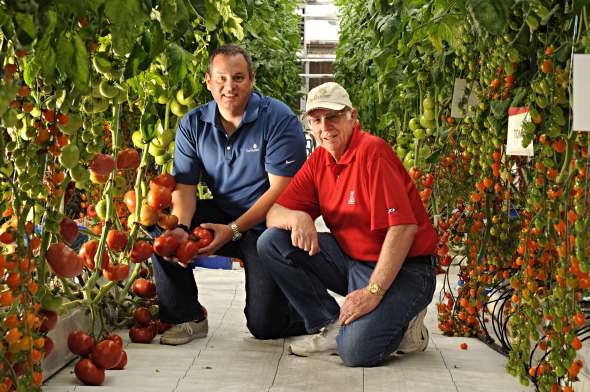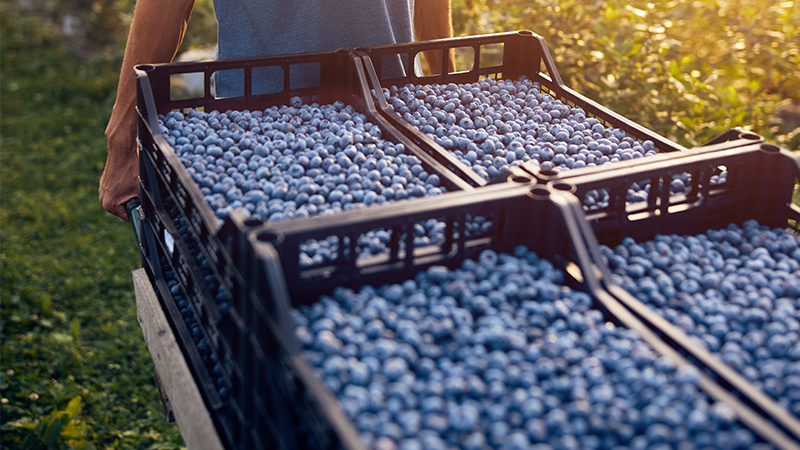How To Successfully Produce Vegetables In Controlled Environments

Editor’s Note: This is the second of a two-part series from Merle Jensen, professor emeritus, Plant Science, at the University of Arizona. Part one focuses on marketing, variety selection, location, management, and environmental control. (Click here to read part one.) Part two offers pointers on growing systems, pest control, harvest, and more.
Jensen is a speaker at the 2015 Greenhouse Crop Production & Engineering Design Short Course, which is slated to be held March 22-27 in Tucuson, AZ. Click on the link for more information on the short course: https://ag.arizona.edu/ceac/Spring-Short-Course
Growing greenhouse vegetables is one of the most exacting and intensive forms of all agricultural enterprises. Hydroponics, in combination with greenhouses, requires high technology, is capital intensive, and highly productive. For success, a grower must have a clear understanding and knowledge of the following critical factors:
Growing Systems

Merle Jensen (right) and his former student, Damian Solomon, now with DeRuiter Seeds, stop for a photo..Photo courtesy of Merle Jensen
Growing in soil is the standard method throughout the world, but soil-borne diseases, lack of control over mineral nutrition, and fruit quality are major problems in these systems. Today, hydroponics/soilless technology, in combination with greenhouse structures, better termed Controlled Environment Agriculture, must have precise control over air and root temperatures, irrigation, plant nutrition, humidity, carbon dioxide, and even light.
While the techniques of hydroponic culture are quite similar throughout the U.S., greenhouse structures and methods of environmental control can differ greatly. The principle advantages of hydroponics include high-density maximum crop yield, crop production where no suitable soil exists, a virtual indifference to ambient temperature and seasonality, more efficient use of water and fertilizer, minimal use of land area, and suitability for mechanization and disease control.
A major advantage of hydroponics is the isolation of the crop from the underlying soil which often has disease problems, salinity, poor structure, and drainage. The costly and time-consuming tasks of soil sterilization and cultivation are unnecessary in hydroponic systems and a rapid turnaround of crops is readily achieved.
For fruiting vegetables, the most commonly used growing media are rockwool, peat moss, vermiculite, perlite, sand, and coco coir. Today, coco coir is rapidly becoming the most popular growing medium.
For leafy greens, liquid systems consisting of water and all essential nutrient elements are provided. The plant roots are directly exposed to the nutrient solution in a closed system with the solution recycled. Hydroponic systems are undoubtedly the key to long-term success and growth of the industry.
Fertigation
Plastics in agriculture started a technological revolution with the advent of drip irrigation, which offers the only means of applying uniform water and fertilizer to fruit-bearing vegetable plants. Such systems assure optimum production with minimal water usage while conserving fertilizer nutrients, controlling and increasing costs associated with water, fertilizer, labor, and machinery.
The application of fertilizer elements is accomplished through the use of fertilizer injectors to feed the plants the exact amount of nutrient elements and control the pH and salinity of the nutrient solution, termed electrical conductivity (EC).
Mineral Nutrition
While many nutrient formulas exist, they are all quite similar, differing mostly in the types of crops grown. It is unlikely there are any “secret ingredients” that make one formula better than another. It is important to know the nutrient requirements of the selected crop and how to apply them through the use of fertilizer injector systems in combination with computer programs designed around light intensity and EC.
To maximize control of the mineral nutrition program, growers today are using little root volume, not only to reduce media costs but to control the nutrient make-up and salinity of the growing media to maximize fruit flavor, especially that of tomatoes.
For leafy greens that are growing in solution culture, the temperature of the nutrient solution can be controlled to prevent crops, such as lettuce, from going to seed prematurely, termed “bolting.”
Today, growing organically is of extreme interest, with systems in use having remarkable success.
Pest Control
Pests are best managed through integrated pest management (IPM). In general, IPM consists of biological controls, plant genetics, cultural practices, and the use of chemicals. Pesticides are avoided, if at all possible, because they are expensive and will reduce maximum possible yields. A thorough knowledge of all diseases and insects, along with their control, is critical for success.
An obvious difficulty with IPM is the interaction of biological controls with even limited pesticide use. The chemicals may kill the introduced predators/parasites as well as the target pests thus requiring reintroductions. Growers often do not have easy access to biological controls nor are they trained in the use of predators and parasites. In part, biological control resembles hydroponics itself.
Harvest/Storage
It is imperative to know the optimum stage at which to harvest a given crop. Getting the harvested crop to the packing house, graded, packaged, and put into controlled atmosphere storage must occur as rapidly as possible. It is necessary to know all aspects of postharvest physiology.
Once your vegetable products leave the farm, it is important for you to know how the purchaser handles it in storage and on display, remembering that when your product reaches the consumer’s fork, the appearance and taste will determine your future growth and success. It’s all about “from seed to fork!
Imagineering
One must have a vision to the future with regard to growing systems, customer relations, dietary changes, and trends.
A grower must be advised and alerted to the development of new technologies through trade magazines, research and scientific publications, and e-Newsletters, etc. It is important for growers to attend workshops to keep advised on new and pending technologies. Don’t let new ideas, concepts, and technologies pass you by.
You don’t want to be seen in the rearview mirror of failure. Instead, only look forward to a successful future.
Dr Jensen is a professor emeritus, plant science, at the University of Arizona.
Get Ready For The 2015 Crop Production & Engineering Design Short Course
The University of Arizona’s Controlled Environment Agriculture Center will present the short course March 22-27 in Tucson, AZ.
The University of Arizona’s Controlled Environment Agriculture Center (CEAC) presents the 14th Annual 2015 Crop Production & Engineering Design Short Course on March 22-27, 2015 at the Westward Look Resort in Tucson, AZ. The 2015 Short Course will feature new topics that focus on resource conservation and sustainability. New lectures include a special talk by University of Arizona Ag Director and food safety specialist, Kurt Nolte, on “Greenhouse Crop Food Safety” and a talk on “Alternative Energy Integrated CEA Systems” by CEAC professor Murat Kacira.
Participants of the Short Course are presented the most current and innovative strategies used in developing and maintaining successful CEA greenhouse systems. For three days, hydroponics, a method of growing plants using mineral nutrient solutions, in water, without soil, is the primary focus. Topics of hydroponics include seed selection, pest management, greenhouse structure and selection, lighting, energy systems, fertigation and more. Lectures during the first three days of the Short Course will also be broadcast over the Internet and can be viewed with the new Webcast attendance option. The Webcast option allows attendees to watch the lectures both live and later at their convenience.
After three-days of off campus classroom lectures, Thursday March, 26th, will consist of hands-on workshops at the CEAC research and educational facilities on the campus of the University of Arizona, with the goal to connect theory and information with practical hands-on experience for each participant. Then on Friday, March 27th, there will be an optional tour to a commercial greenhouse, which will attempt to tie everything students have learned together from Monday through Thursday.
For more Short Course details and information such as the course schedule and registration form, go to https://ag.arizona.edu/ceac/Spring-Short-Course or contact Aaron Tevik by phone at 520-626-9566 or [email protected].









